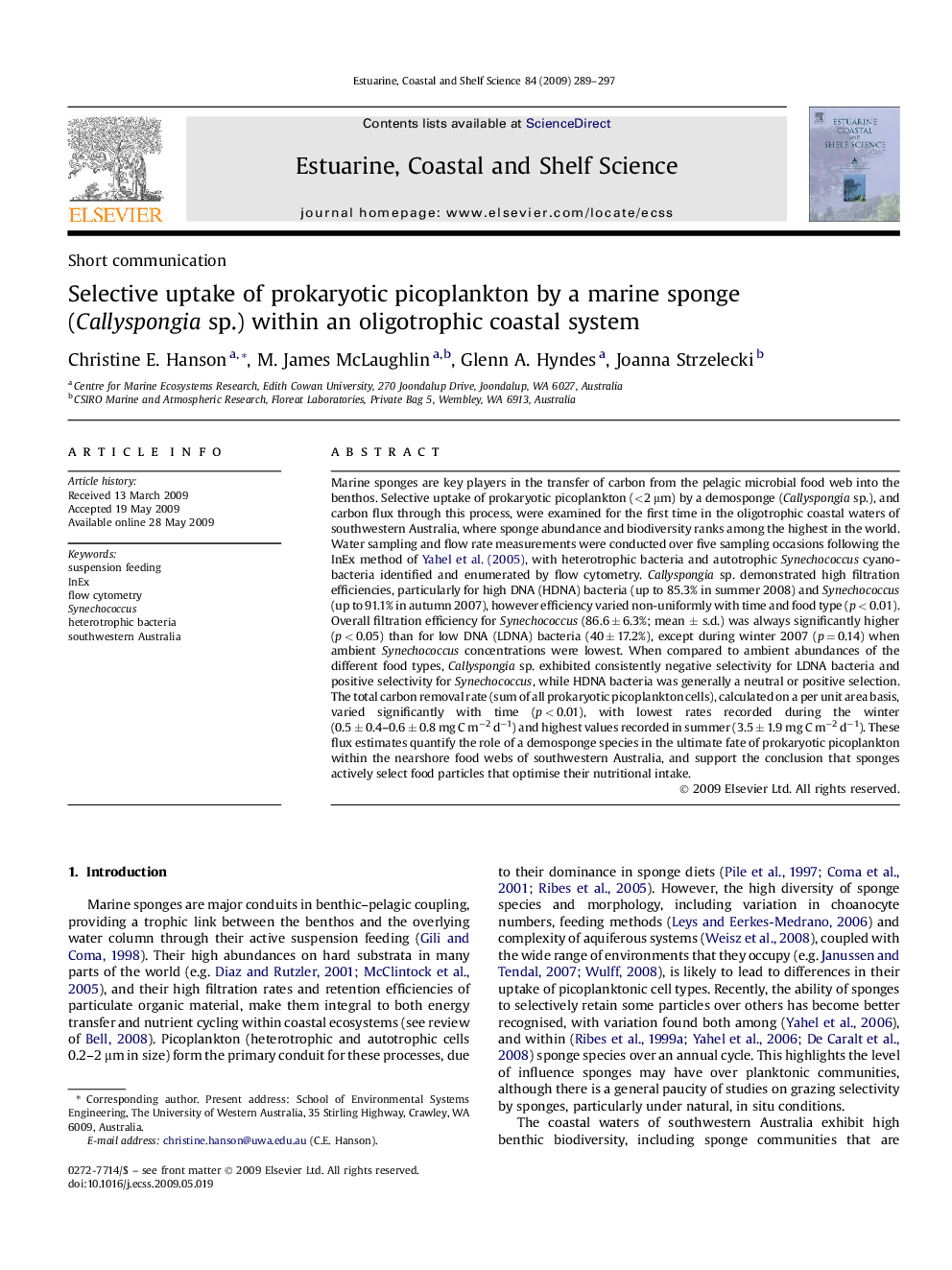| کد مقاله | کد نشریه | سال انتشار | مقاله انگلیسی | نسخه تمام متن |
|---|---|---|---|---|
| 4541266 | 1326715 | 2009 | 9 صفحه PDF | دانلود رایگان |
عنوان انگلیسی مقاله ISI
Selective uptake of prokaryotic picoplankton by a marine sponge (Callyspongia sp.) within an oligotrophic coastal system
دانلود مقاله + سفارش ترجمه
دانلود مقاله ISI انگلیسی
رایگان برای ایرانیان
کلمات کلیدی
موضوعات مرتبط
مهندسی و علوم پایه
علوم زمین و سیارات
زمین شناسی
پیش نمایش صفحه اول مقاله

چکیده انگلیسی
Marine sponges are key players in the transfer of carbon from the pelagic microbial food web into the benthos. Selective uptake of prokaryotic picoplankton (<2 μm) by a demosponge (Callyspongia sp.), and carbon flux through this process, were examined for the first time in the oligotrophic coastal waters of southwestern Australia, where sponge abundance and biodiversity ranks among the highest in the world. Water sampling and flow rate measurements were conducted over five sampling occasions following the InEx method of Yahel et al. (2005), with heterotrophic bacteria and autotrophic Synechococcus cyanobacteria identified and enumerated by flow cytometry. Callyspongia sp. demonstrated high filtration efficiencies, particularly for high DNA (HDNA) bacteria (up to 85.3% in summer 2008) and Synechococcus (up to 91.1% in autumn 2007), however efficiency varied non-uniformly with time and food type (p < 0.01). Overall filtration efficiency for Synechococcus (86.6 ± 6.3%; mean ± s.d.) was always significantly higher (p < 0.05) than for low DNA (LDNA) bacteria (40 ± 17.2%), except during winter 2007 (p = 0.14) when ambient Synechococcus concentrations were lowest. When compared to ambient abundances of the different food types, Callyspongia sp. exhibited consistently negative selectivity for LDNA bacteria and positive selectivity for Synechococcus, while HDNA bacteria was generally a neutral or positive selection. The total carbon removal rate (sum of all prokaryotic picoplankton cells), calculated on a per unit area basis, varied significantly with time (p < 0.01), with lowest rates recorded during the winter (0.5 ± 0.4-0.6 ± 0.8 mg C mâ2 dâ1) and highest values recorded in summer (3.5 ± 1.9 mg C mâ2 dâ1). These flux estimates quantify the role of a demosponge species in the ultimate fate of prokaryotic picoplankton within the nearshore food webs of southwestern Australia, and support the conclusion that sponges actively select food particles that optimise their nutritional intake.
ناشر
Database: Elsevier - ScienceDirect (ساینس دایرکت)
Journal: Estuarine, Coastal and Shelf Science - Volume 84, Issue 2, 10 September 2009, Pages 289-297
Journal: Estuarine, Coastal and Shelf Science - Volume 84, Issue 2, 10 September 2009, Pages 289-297
نویسندگان
Christine E. Hanson, M. James McLaughlin, Glenn A. Hyndes, Joanna Strzelecki,